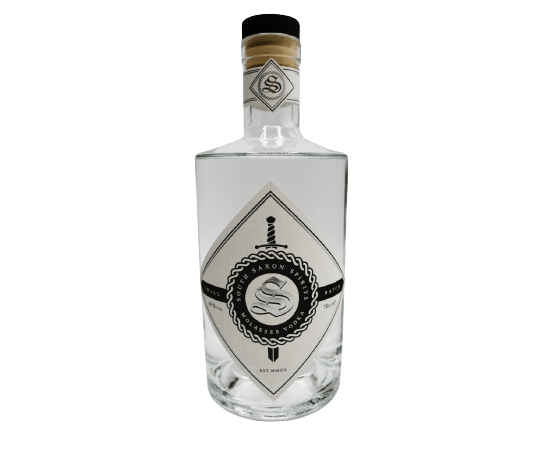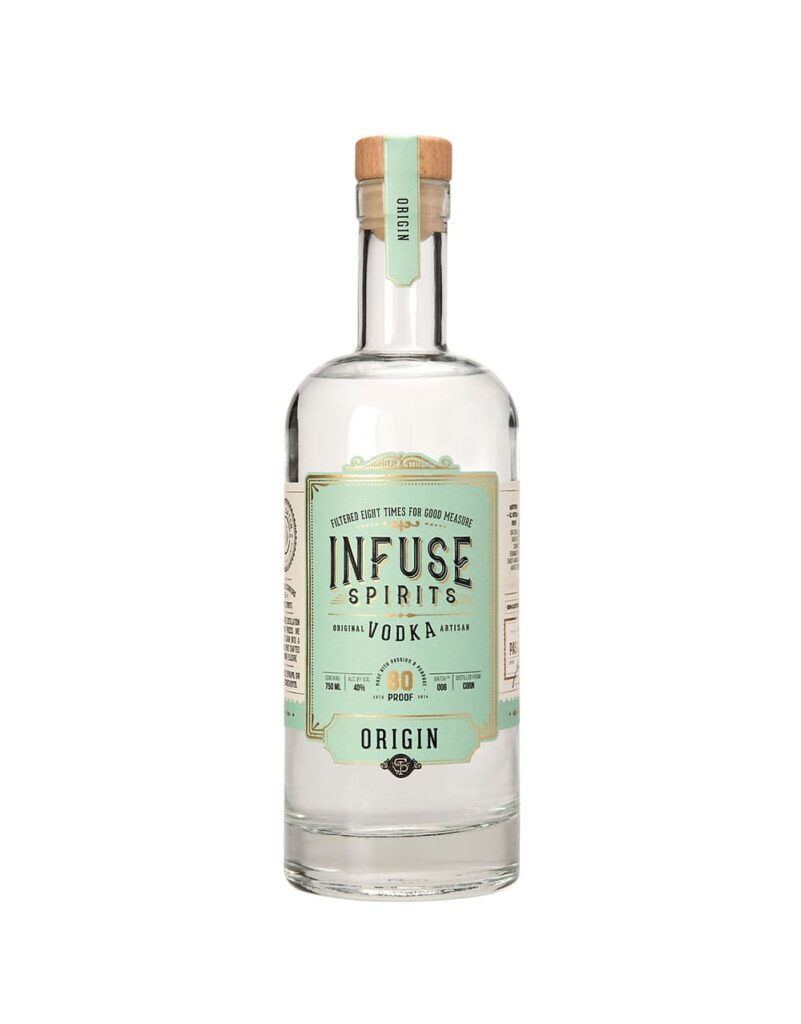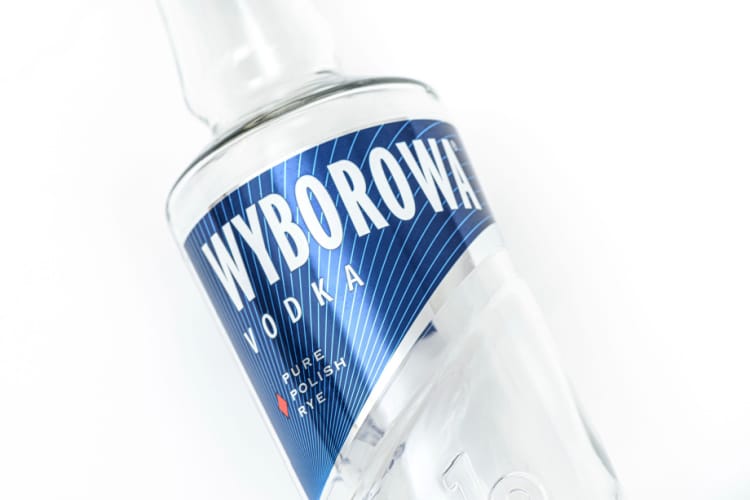Vodka is easily one of the most popular alcoholic spirits in the world, and it’s been a huge fan favorite since its inception in the vodka belt countries around Eastern Europe, but mainly Russia.
Over the centuries, distilleries produced types of vodka depending on the availability of the raw ingredients and the conditions in their regions. Most of the time, medieval distilleries chose the cheapest possible options that are now considered to make the traditional eastern vodka.
However, ingredients are more readily available and affordable now, and vodka-making can be perfected down to an exact science using modern measurements and science. As such, we’ve seen the different types of vodka more strictly defined over the last century or so.

If you want to learn about these types, read on as we’ll discuss those and explain how using different ingredients gives you contrasting results. After that, we’ll look at the regional varieties of vodka, so stick around!
History of Vodka
Here’s a brief history of vodka to help you understand the rich tale behind this beloved drink:
Origins
Although Russia is unanimously associated with Russia today, the first mention of the word in surviving books comes from Poland in the 15th century.
Also, a distinct variety of vodka developed in Poland around this period and in the subsequent century, and that’s enough grounds for many people to claim Poland as the birthplace of vodka.
However, Russia has a historical claim, too, which resonates with most people, especially when they find out that the word “vodka” comes from the Russian word “voda,” meaning water. Moreover, there’s evidence of vodka consumption in Russia as early as the 14th century.
Vodka in Its Infancy
In medieval times, vodka started as a form of medicine that was used for various ailments, from migraines to infertility and beyond. It later turned into a renowned spirit in rural Russian pubs that the people loved so much that they’d spend all their days getting drunk.
By the 17th century, vodka had a good claim as the national drink of Russia.
Medieval distilleries knew that proper vodka was made by fermenting natural sugars. Although some early accounts call for using crushed grapes, potatoes became the most popular option because they were cheap and abundant.
Production methods were also often very basic around that time, and they relied on multiple distillation stages. In Poland, triple-distilled vodka was popular for a while.
In the following centuries, many governments monopolized vodka production for a while but eventually ceded it to the private sector, which opened new doors for vodka creativity and made it more available at affordable prices for working people.
How Vodka Is Made
The process of making vodka underwent numerous changes throughout its 600+ years of history, but towards the end, distilleries have settled on this process.
Mashing
The base version of vodka is meant to be pure ethyl alcohol diluted with water so that it has no flavor, aroma, or color. However, the first step is to choose an ingredient with natural sugar (like starch) to use as a base for the spirit.
As we mentioned above, potatoes have long been the most popular pick because of their low cost and high availability. Other tried-and-tested bases include rye, corn, wheat, grapes, and other cereals.
Distilleries can also choose fruits with stronger characteristics, but most of them will eventually fade out and still produce the neutral-flavored vodka we know.
Once you’ve picked your base ingredient, simmer it with water and stir until it’s mashed. During this process, the starch in your base will turn into sugar.
Fermentation
Next, distilleries move the mashed ingredient into large stainless steel tanks and add yeast to begin the fermentation process, which can last anywhere from 3-5 to a week or two.
During fermentation, the sugars are converted into the desired ethyl alcohol. Once it’s finished, the mash will be around <10% alcohol. It’ll then be ready for distillation.
Distillation
From here, the fermented mash can be distilled in column or pot stills.
Column stills have long been used to guarantee the vodka’s neutral character, but many distilleries also opt for pot stills to generate a more flavorful spirit.
Once the mash is in the still, it’s steamed from below for long enough to allow the alcohol to boil before the water in the mash.
As the alcohol vapor moves to other columns, it meets with cold surfaces that allow it to condense and return to a liquid form.
It’s also popular to distill the vodka multiple times to reach high alcohol levels at maximum purity before sending it to the next stage.
Filtration
To ensure vodka maintains its neutral flavor and aroma, it runs through a delicate filtration process that uses activated carbon to remove any undesirable elements, such as flavorings or unwanted alcohol.
This method can also be repeated to ensure maximum purity before dilution.
Dilution
Once the pure vodka is ready, it has unpalatable alcohol levels of 95+%, so it must be diluted to the desired ABV before it’s bottled.
Infusion (Optional)
To make flavored vodka, you have to infuse it with the flavor you want (typically a fruit or herb) by submerging your ingredient in the spirit for 3-7 days.
Popular infused flavorings include pear, peach, blackcurrant, cherry, apple, ginger, cinnamon, honey, and pepper.
Different Types of Vodka
- Plain Vodka
- Potato Vodka
- Wheat Vodka
- Corn Vodka
- Rye Vodka
- Molasses Vodka
- Flavored Vodka
- Infused Vodka
- Fruit Vodka
- Herb Vodka
1. Plain Vodka

The most basic, traditional, and popular type of vodka to enjoy is good ol’ plain vodka. No flavorings or additives ensure that your vodka can be mixed with virtually any ingredient to produce an enjoyable cocktail.
The incredible versatility of plain vodka is one of the reasons it’s become one of the most popular spirits in the world. Still, you can also enjoy it neat, and it’s not entirely unimaginable to enjoy it on the rocks, either.
Plain vodka is often made from potatoes, wheat, or corn.
Potato Vodka
Who could’ve imagined back then that using potatoes and some chemistry magic could turn a sturdy root vegetable into an enjoyable spirit that would go on to take a front seat on the culture bus?
Potato vodka has been the most ubiquitous in Eastern and Northern Europe for centuries, mainly due to its availability and affordability. And although it declined a bit in popularity during the 20th century, it’s been making a comeback in recent years.
Potatoes are rich in starch, resulting in a creamy and slightly sweet vodka and a mild aroma.
Wheat Vodka
Wheat vodka has been popular for well over a century in Russia and parts of Northern Europe, most notably Sweden. It quickly took over potato vodka as the most widespread type of grain vodka.
That’s because wheat is also affordable and abundant. It delivers a smooth and light drinking experience with subtle notes of wheat grains and an earthy mouthfeel. But it maintains the famous neutral profile of vodka.
Corn Vodka
Corn vodka is another popular type of plain vodka, especially in America. It yields vodkas with higher alcohol by volume than wheat or potato vodka, but it can be diluted down to a typical grain vodka drinking experience.
The main difference with corn vodka is the slightly noticeable buttery hint in the aroma, as well as the sweet notes of vanilla.
2. Rye Vodka

Rye grain can also be used to make rye vodka, which shares some similarities with other types of grain vodka but with some distinct changes. It’s almost like it was made to spite the people who enjoy traditional grain vodka, but it shines in its own right.
Rye vodka keeps the neutral taste and aroma of plain grain vodka, but it has a noticeably earthy mouthfeel with a slightly spicy and sweet, almost caramel-like flavor profile.
This distinction is simply due to rye being a more niche and spicy grain than wheat or corn. But apart from that, the distillation process is the same, and you can enjoy rye vodka as you would any other plain type.
3. Molasses Vodka

Molasses vodka is made from molasses, which can be extracted from sugarcane or sugar beets, depending on what’s available.
Unlike the plain types of vodka, molasses vodka has a noticeable flavor profile with sweet and smoky notes that almost resemble those of rum. It’s still vodka, but the sweet and caramel-like base and mouthfeel are distinct and pleasant.
Because of the robust flavor, molasses vodka is popularly drunk neat. It can be enjoyed on the rocks like other spirits or used in some yummy cocktails like the Old Fashioned or Ginger Snap.
4. Flavored Vodka

Flavored vodka is simple and effective, and you can even create bold flavors from the comfort of your own home by combining pure plain vodka (such as grain vodka or rye vodka) with your favorite flavoring, whether that’s a syrup, a concentrated juice, a distillate, fruit pulps, or else.
The sky truly is the limit with flavored vodka, as you can add your favorite ingredients in your preferred concentrations to produce the perfect drink for your needs.
And if you don’t fancy doing it yourself, you can buy flavored vodkas made with some popular syrups, such as cherry, pears, vanilla, caramel, chocolate, and more.
Flavored vodka is best enjoyed on the rocks, in our opinion. But if your flavoring isn’t too concentrated, you can also use it to make some brilliant cocktails.
5. Infused Vodka

Yes, infused vodka isn’t the same as flavored vodka. Because instead of adding flavorings to plain vodka, the original ingredients are infused while they’re fresh with vodka and left to rest for a few days or even a week.
Infused vodka is quite the work of art, especially given how many options you can find and how they fit into many different cocktails. They even taste excellent neat or on the rocks.
Besides, if you crave an option you can’t find in your local store, you can make it yourself by grabbing the ingredients as they’re fresh and infusing it yourself.
Generally, vodka is infused with fresh fruits for a sweet flavor or herbs for a spicy one.
Fruit Vodka
Although Russia and Poland will argue over where vodka originated, they both perfected hundreds of recipes of fruit-infused vodka over the centuries.
Poland gives us some great options, like kruskawkowa (strawberry), pigwowa (apple), and wisniowka (cherry).
Meanwhile, in Russia, popular fruits to infuse with vodka include lemon, orange, lime skins, raspberry, and the boldest of them all: pertsovka, which is pepper-infused.
Herb Vodka
Infusing vodka with herbs is also extremely popular, especially since the times when the spirit was used as a medicine rather than a smooth recreational drink.
The choice of spices or botanicals that you use here depends on what you want. Some people like to go all the way with flowers, for example, while others prefer more familiar ingredients like ginger or cinnamon.
You can also break the spiciness of the more bitter herbs with a dash of honey. It goes well with ginger!
Remember that, again, the sky is your limit if you choose to infuse at home. Heck, we’ve even seen horseradish vodka.
Vodkas by Regional Variety
- Russian Vodka
- Polish Vodka
- French Vodka
1. Russian Vodka

As you know by now, Russian vodka is one of the original types of vodka that took off centuries ago and eventually became popular worldwide.
In the past, it was made by fermenting potato mash, but nowadays, grains like wheat are more popular. It can also be distilled from a blend of different grains, but the prominence of wheat is very noticeable in Russian distilleries.
Like in the US, Russian vodka typically has around 40% ABV.
The traditional way to enjoy Russian vodka is to take a shot and follow it up with a salty snack with a prominent flavor to break the bitterness of vodka. The most popular vodka snack is easily salted pickles, but caviar is also great.
2. Polish Vodka

Polish vodka has its own decent claim to the origins of the spirit, but regardless of whether it’s true or not (we’re not picking sides!), they still enjoy a long and rich history with vodka that’s bred many different styles.
Traditionally, Polish vodka was made from grains, just like how the Russians did it. However, instead of primarily focusing almost solely on wheat, the Poles also like their rye and barley. Occasionally, you may also find the occasional potato-inspired Polish vodka.
This mix produces a spirit that’s smooth on the tongue, has a nice mouthfeel, and is famously high-quality.
3. French Vodka

French vodka may feel like an insult to someone who’s used to the traditional potato or grain-based vodkas of the East because it uses grapes as a base. It’s no surprise, given the abundance of grapes in France for all the wine-making.
Grape-based French vodka goes through numerous distillations to produce a flavor and aroma as neutral as possible. And while the grape characteristics eventually thin out with enough distillations, there are still noticeable notes of fruitiness and sweetness in the vodka.
Conclusion
Surprisingly, many people don’t know that there are different types of vodka. If you were one of them, then we hope you learned more about this world-renowned spirit in this post and can now pick your drinks more diligently if you wish.
The types of vodka aren’t as strictly defined as, say, the types of rum or tequila. However, the ones we listed here are generally accepted as being different enough to be considered distinct types but similar enough to maintain the familiar profile of vodka.
In the end, if you’re looking for the classic feel of tasteless, odorless, and colorless vodka, then you can’t go wrong with any type of potato or grain vodka, such as wheat, corn, or rye vodka.